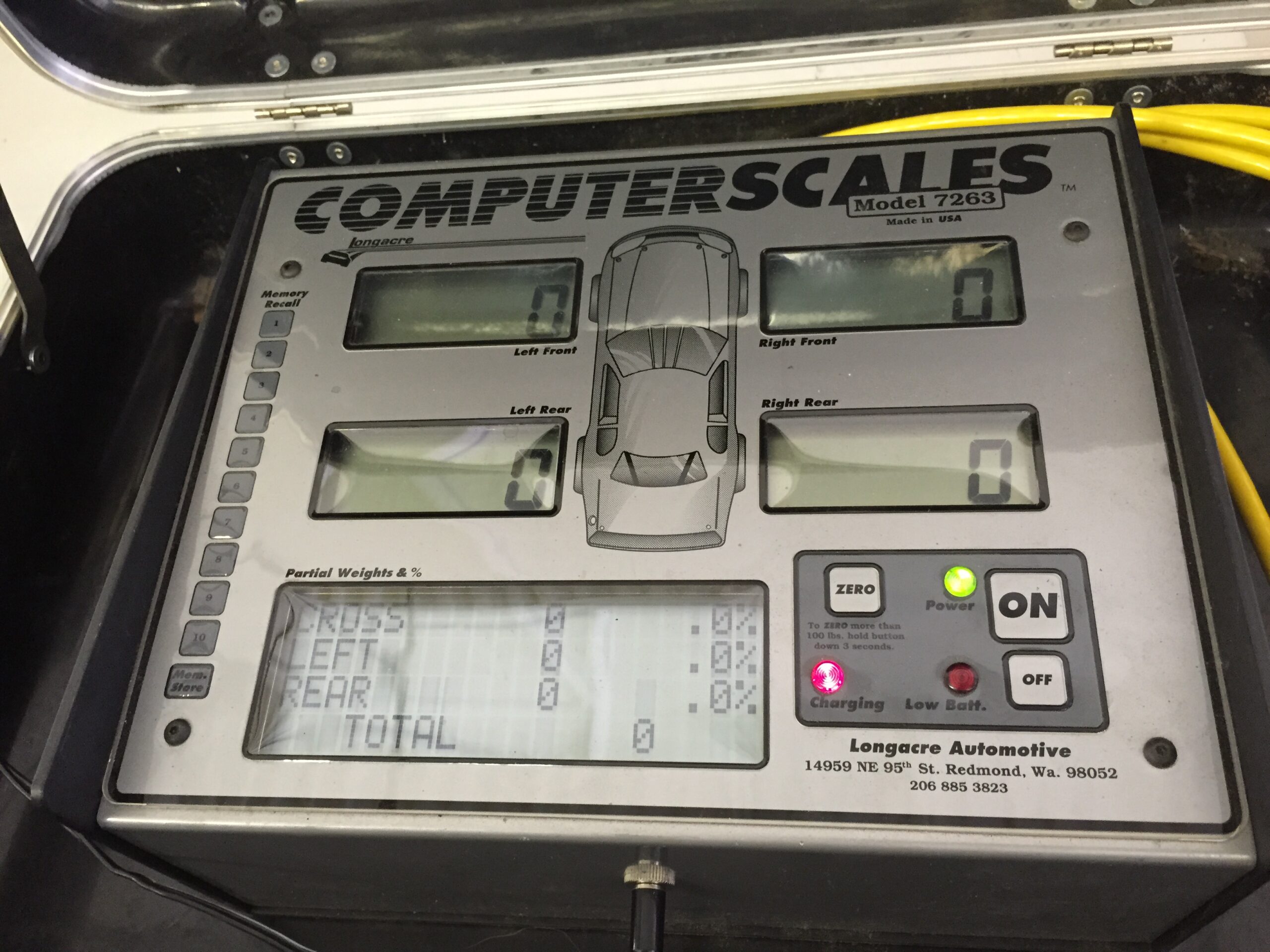What is Corner Balancing?
 Corner balancing is exactly what it sounds like. It is a process that attempts to properly corner weight the vehicle. During this process the static weight of your car is shifted from corner to corner to achieve as close to a 50/50 “corner balance” from the left front of the vehicle to the right rear of the vehicle. You can partially corner balance a vehicle by moving physical parts of the vehicle from corner to corner or by adding weight (or removing weight) from the outermost corners of the vehicle, but the proper way to corner balance is through modifying the vehicles ride height at each corner. Think about it……. As you raise the left front corner of the vehicle, where does that weight go? It transfers weight to the other 3 corners, but mostly to the right rear.
Corner balancing is exactly what it sounds like. It is a process that attempts to properly corner weight the vehicle. During this process the static weight of your car is shifted from corner to corner to achieve as close to a 50/50 “corner balance” from the left front of the vehicle to the right rear of the vehicle. You can partially corner balance a vehicle by moving physical parts of the vehicle from corner to corner or by adding weight (or removing weight) from the outermost corners of the vehicle, but the proper way to corner balance is through modifying the vehicles ride height at each corner. Think about it……. As you raise the left front corner of the vehicle, where does that weight go? It transfers weight to the other 3 corners, but mostly to the right rear.
What is the Goal?
The optimal setup is for the front and rear weights to be equal for both left and right sides. Every corner balance requires weights to be input into the corner balancing equation including the drivers weight. A perfect balance is very rarely possible, but if you can get to within .01-.1% of a perfect cross weight, that is ideal. When a car has a proper corner balance performed, the car will feel more “balanced” and/or neutral. Turning, braking, as well as acceleration can all be improved after a corner balance procedure.
As you may have read in one of our newest articles, Should I Install Coilovers on my Car?, the biggest advantage of installing coilovers is having the ability to corner balance your vehicle. Without corner balancing the car, you could potentially be doing more harm than good by upsetting the vehicles dynamic in all driving conditions.
What is the Process?
When performing a corner balance, the vehicle is driven onto an alignment rack or a known perfectly flat surface and the weight scales are placed under each wheel/tire. The technician will then record each corner weight before starting to make adjustments. The next step is getting the preferred ride height dialed in. Once the ride height is set, the technician can start making small adjustments to each corners ride height to achieve the ideal cross weight. It can be a meticulous process, but can change the overall driving dynamic of the vehicle entirely. For anyone who does any form of motorsports with their ISC coilovers, we highly suggest this beneficial service.
- What is Corner Balancing?
- Written on March 21st, 2016
- Updated on December 21st, 2018
